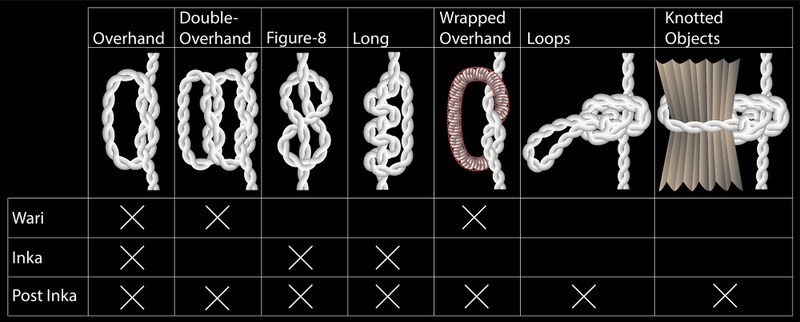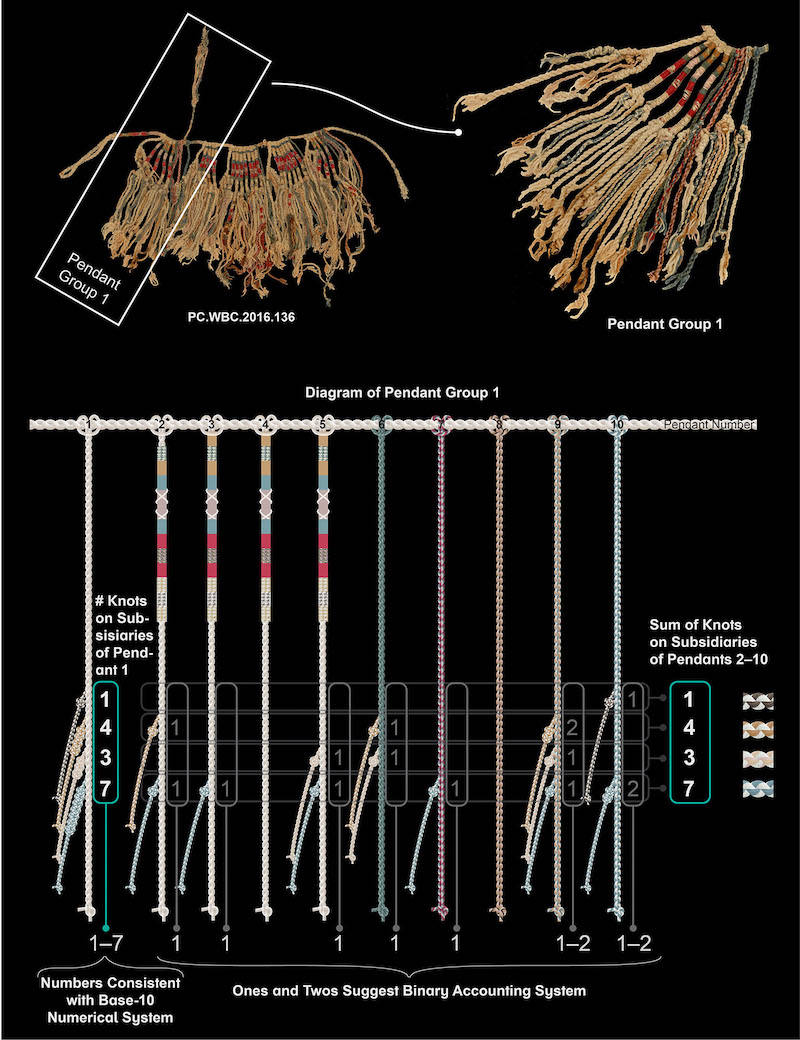Explore Ancient Andean Knot Writing


Dumbarton Oaks Museum explores an ancient system of recorded information by the people of South America that was portable, precise, and so complex that it remains undeciphered today.
The long-lived Wari Empire and vast Inka Empire employed sophisticated devices called khipu to record information, such as census data and labor obligations.
Made of cords, both Inka and Wari khipu seem to have recorded not only quantitative or statistical content, but narrative information as well. The variation in cord structures, colors, wrapping patterns, and knots encoded and conveyed information, while the basic khipu elements—flexible knotted cords—offered a lightweight and compact means of transporting information across distances.
This exhibition is the first to bring together examples of Wari, Inka, and Colonial khipu. Less than a dozen complete Wari khipu are known to exist in museum collections, and three are on display at Dumbarton Oaks, along with interactive displays that help visitors understand the way khipu worked, how they were made, and how information was encoded.
Using a wide variety of colors, strings, and sometimes several hundred knots all tied in various ways at various heights, khipu could record dates, statistics, accounts, and even represent, in abstract form, key episodes from traditional folk stories and poetry.
The exhibition was on view at the museum in 2019 and can be viewed online here, along with videos.






